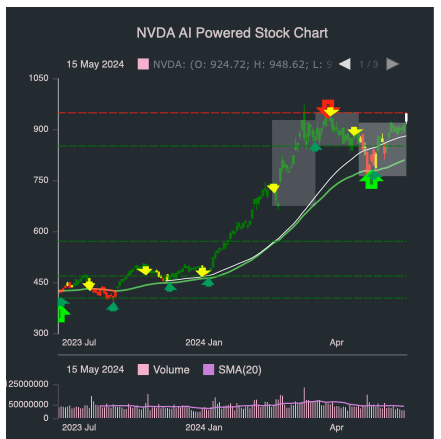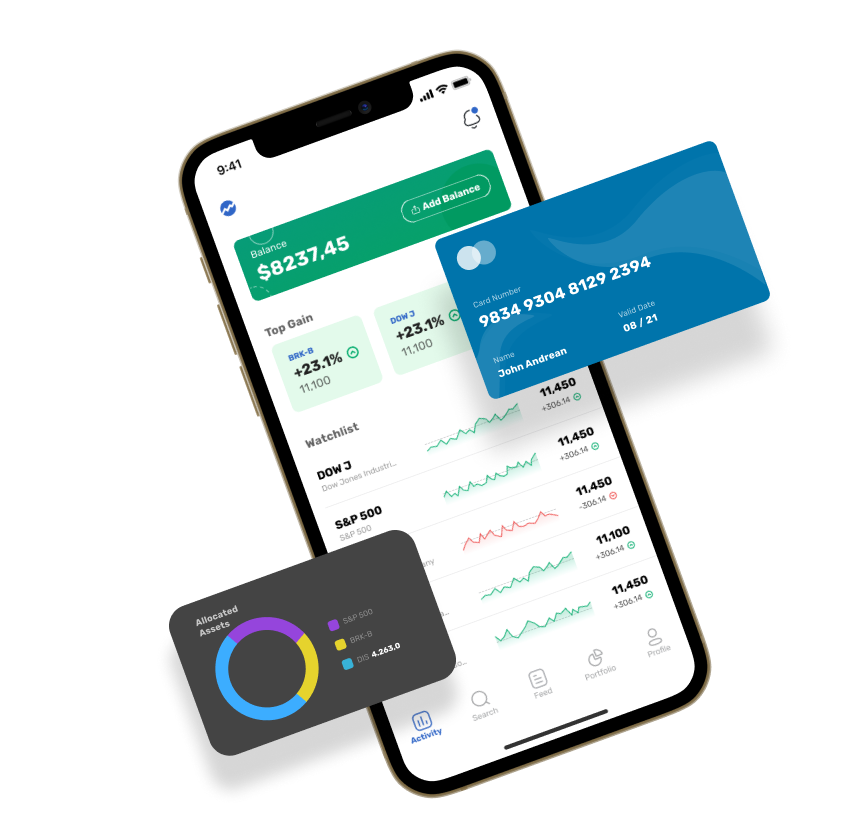It is vital to know that AI trading platforms that incorporate predictive analysis of stocks can provide users with the option of customizing their platform in accordance with their trading goals as well as their risk tolerances and market conditions. A platform offering a range of customizable options can help you improve your trading. Here are 10 suggestions on how to assess the flexibility of these platforms.
1. Evaluate Pre-Built Strategy Templates
A variety of templates. Check whether the platform comes with a wide variety of pre-built strategies to suit different types of trading (e.g. day trading, swing trading or long-term investment).
Easy to use: Check the ease with which you can apply and alter these templates to suit your needs.
Performance history: Make sure that the platform has historical data about performance for the strategic plans that have been pre-built.
2. Assess Custom Strategy Creation
Drag-and drop tools: Search for platforms with intuitive drag-anddrop interfaces to create unique strategies.
Look into the options for coding on the platform. Advanced users may want to use custom scripting languages (e.g. Python or R).
Flexibility: Ensure the platform lets you define your entry/exit parameters as well as risk management metrics and other important components of your strategy.
3. Check for Backtesting Capabilities
Historical data. Examine whether your platform can provide enough historical data in order to test your strategy back.
Modifiable parameters - Make sure that you have the ability to change parameters (e.g. timeframes, indicator) when back-testing.
Performance metrics - Make sure to see if your software offers detailed performance indicators (e.g. the win rate, Sharpe coefficient or drawdown) for all backtested strategies.
4. Evaluate Real-Time Strategy Testing
Paper trading: Check if the platform provides paper trading and simulation modes to test strategies in real time, without risking your capital.
Live testing: See whether you can test your strategies on real-world markets with only a small amount of capital.
Real-time Adjustments: Test whether you can adjust in real-time in response to market conditions.
5. Examine the integration using technical indicators
Indicator library: Check if the platform offers a comprehensive collection of technical indicators (e.g. moving averages, RSI, MACD).
Custom indicators. You must ensure that you have the ability to design or implement custom indicators in your strategy.
Combinations of indicators: Check whether the platform supports the combination of several indicators to make more complex strategies.
6. Check for Risk Management Tools
Stop-loss/take-profit: Ensure the platform allows you to set stop-loss and take-profit levels within your strategies.
Position sizing - Check to see if you have any rules you could follow (e.g. a fixed amount or the percentage of your portfolio) for managing risk.
Risk-reward: Make sure your platform allows you to define risk-rewards for each strategy or trade.
7. Evaluate Multi-Asset Strategy Support
Asset Classes: Make sure that the platform can support strategies from multiple asset classes (e.g. ETFs, Options, Forex, Stocks).
Cross-asset Strategies: Examine whether it is feasible to develop strategies that combine various asset classes.
Market coverage. Make sure the platform covers the markets that you are interested in (e.g. US international, copyright).
8. Review the automation and Execution
Automated trading: Ensure the platform allows automated execution of strategies using predefined rules.
Types of orders: Make sure that the platform is able to execute various types of orders, such as stop, limit, market and stop.
Latency: Determine if the platform can execute trades with minimal latency, particularly when using high-frequency strategies.
9. Check for Strategy Optimizing Tools
Parameter optimization - Ensure that your platform comes with tools to optimize the strategy parameters.
Machine learning: Ensure the platform is machine learning integrated to refine and optimise strategies.
Scenario analysis: Determine if the platform allows testing strategies in different market conditions (e.g., bull, bear and volatile).
Check out the Community Feedback and User Reviews
User feedback Research user feedback to determine the efficacy of the platform for customizing strategy.
Community forums. Find out if the users are able to share and discuss their ideas within a lively and vibrant community.
Support resources: Ensure the platform provides tutorials, webinars, or other documentation that can help users design and implement strategies.
Bonus Tips
Trial period for free: You are able to explore the options for customization of the platform using a a demo or free trial.
Scalability: Make sure the platform can handle increasingly complex strategies as your trading grows.
Customer Support: Make sure that the platform offers support for any issues related to the strategy or queries.
These suggestions will allow you to analyze the various customization options available to AI trading platforms that predict/analyze the market. So you'll be able choose one that matches your trading goals, which allows you to refine and implement strategies. A platform offering powerful customization options will allow you to change your strategy to meet changing market circumstances and improve your results. Have a look at the best sources tell me on ai stock market for site tips including investment ai, market ai, ai investing app, ai trading, ai investing platform, ai investing app, ai for investing, ai for stock trading, ai stock picker, ai investing and more.

Top 10 Tips To Evaluate The Transparency Of Ai Stock Predicting/Analyzing Trading Platforms
Transparency is a crucial factor when evaluating AI-driven stock prediction platforms and trading platforms. Transparency is important since it lets users be confident in the platform, comprehend the decisions made and verify the accuracy. Here are 10 suggestions for evaluating the transparency of platforms.
1. AI Models: A Simple Explanation
Tip: Verify that the platform clearly explains the AI models and algorithms that are used to make predictions.
The reason: Understanding the basic technology allows users to assess its reliability and limitations.
2. Data sources that are disclosed
TIP: Check whether the platform is transparent about which data sources are utilized (e.g. historic stock data, news and social media).
The reason: Knowing the sources of data helps ensure the platform uses precise and complete information.
3. Performance Metrics and Backtesting Results
Tip: Look for transparent disclosure of performance indicators (e.g. the accuracy rate or ROI) and results from backtesting.
This lets users test the effectiveness of the platform and its historical performance.
4. Updates and notifications in real-time
Tips. Check whether the platform offers real-time updates or notifications on system changes and trades, as well as predictions.
Why: Real-time transparency ensures that users are informed at all times about crucial actions.
5. Transparent Communication Concerning Limitations
Tips Make sure the platform is clear about its limitations and risks with regard to trading strategies and forecasts.
Understanding the limitations of a product can build confidence, which allows users to make better decisions.
6. Users can get access to the raw data
Tips: Ensure that users have access to the raw data used in AI models or intermediate results.
Why? Users can do their own analysis and verify their predictions using the data in its raw form.
7. Transparency in Costs and Fees
Tip: Make sure that the fees, subscription charges and possible cost-savings are clearly listed on the platform.
Transparent Pricing: It builds trust by preventing costs that are unexpected.
8. Reporting Regularly and Audits
TIP: Find out if the platform provides regular reports or undergoes audits from third parties to verify its performance and operations.
Why: Independent verification adds credibility and ensures accountability.
9. Explanability of Predictions
Tip: Determine if the platform can explain the process by which it comes up with specific predictions or suggestions (e.g. decision trees, the importance of features).
Why Explainability allows users to better understand AI decisions.
10. User feedback and support channels
Tip - Check if the platform provides open channels for feedback and support from users, and whether they respond transparently to their concerns.
What is Responsive Communication? It demonstrates the commitment to transparency and customer satisfaction.
Bonus Tip - Regulatory Compliance
Make sure the platform is adhering to relevant financial regulations and discloses this conformity status. This will add an additional layer of confidence for the platform.
Make informed choices by taking a look at all these aspects. Follow the most popular ai stock price prediction advice for website info including best ai trading platform, ai trading tool, best ai penny stocks, free ai tool for stock market india, best ai for stock trading, ai share trading, investing with ai, how to use ai for stock trading, ai stock analysis, ai stock predictions and more.
